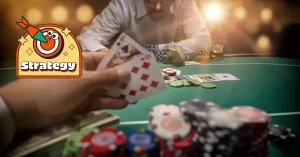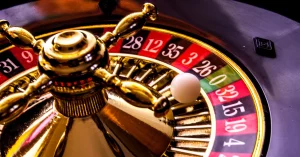A Look at the Martingale Betting System – Does it Work?

The Martingale strategy is among the most well-known and long-standing betting strategies. Since there are no intricate equations involved, it also happens to be one of the simplest to master–the mathematics involved is elementary, and the process consists of only a few fundamental steps.
The Martingale is a negative progression method in which the bettor raises his or her bet after a loss. The idea is that you will eventually win a wager and that the odds of losing several in a row are minimal. This reasoning, no matter how convincing it first appears, is flawed.
The majority of gamblers have likely given the Martingale strategy a shot at least once–this is likely due to the system’s apparent simplicity and the fact that it looks effective at first glance.
There is no assurance that this strategy will work any better than any other kind of progressive betting. In reality, it may be one of the riskiest methods available! If you read this post, you’ll see why.
We’ll dive deep into the system, breaking down how it operates and why it doesn’t work and providing details on several alternative takes on the Martingale strategy.
What is the Martingale System?
The Martingale strategy is most often employed on even money bets in online betting apps and casinos–players will often test this strategy on the table’s outer bets, which can be odd or even.
It can be employed on straight-up wagers in sports betting, as well as on pass or don’t-pass bets in craps, blackjack, baccarat, and other games.

This system’s operation is really straightforward–you only need to remember two simple guidelines:
- If you lose, double your bet.
- Bet one unit of base currency following every win.
The Martingale consists of that–any amount can be used as the base unit, although it is wise to keep it low for factors that will become obvious later!

Using the Martingale System
Take the Martingale strategy while playing roulette as an example–you always decide to place an odd bet using a basic stake unit of $5. Therefore, your first bet would be $5 for the odd numbers, and you would maintain your $5 wager if the outcome were an odd number. You would double your bet to $10 if the outcome were an even number, and you would increase your bet if an even number appeared once more–then you would have $20.
The underlying idea is the belief that by doubling up, you are going to win and cover all of your losses, making a one-base unit profit.

Here is an example:
- Stake $5, lose. Total -$5
- Lose after doubling up to $10. Total -$15.
- If you double up to $20 and lose, the total is -$35.
- Win if you double up to $40. Total +$5.
It makes no difference how many consecutive bets you lose or how much your starting unit is worth. If you stick to the strategy, every winning bet will result in a gain of exactly one unit.
This is the typical response of newcomers to the Martingale strategy, who regard it as a foolproof method to win big at the casino on online betting apps. But as you’re about to see, that’s not the case at all.
The Martingale System: Does It Work?
This method may be effective in the short term–as long as you don’t let yourself go on any prolonged losing streaks, it could remain profitable for quite some time! The issues arise when a losing streak sets in, which will likely happen.

The Martingale betting strategy has a major downside: the needed stakes can quickly become quite expensive if there is a string of losing bets. Using the same $5 initial investment as before, let’s explore how quickly your bankroll can dwindle if you lose six consecutive bets.
If you’ve lost the last six bets in a row, which is very possible, you’ll need to put down $320 on the following one. That’s $64, and you’d be down $315 already from your first wager. You might think you have a lock on the following one, but there’s actually very little chance of that happening–no matter what happened previously, there is still a 50/50 probability of success.
If you were to lose the following one, your loss would increase to $635. In addition, your next bet would need a $640 investment. It’s possible that you’ve blown all of your money! If you haven’t already, even one or two more losses might be very costly–you might end up exceeding the maximum bet for the table and having to fold.
The Martingale strategy loses money in this situation–if you have an endless bankroll and play in a gambling establishment with no maximum bet, then this technique works well, but you will eventually run out of cash or need to bet above the table limit if you use this strategy for a long enough period of time. Even if you manage to reduce the loss and restart, you will have lost any money you have made up to that point.
Final Thoughts
As you read this, you might be thinking that it’s unlikely that you’ll be on a losing run for long enough to bring about problems, but it is a possibility. In reality, it’s far more common than you realize! Every bet has the same one-to-one probability of success despite previous results.
So we don’t recommend using the Martingale strategy, as the prospective rewards aren’t worth taking such a high risk to obtain. Remember that the maximum gain from a winning bet is one base unit.
If you are determined to try it out, we advise playing for free on an online gambling app a few times before moving forward–that way, you can see for yourself and decide if it’s worth the risk!

Matthew specializes in writing our gambling app review content, spending days testing out sportsbooks and online casinos to get intimate with these platforms and what they offer. He’s also a blog contributor, creating guides on increasing your odds of winning against the house by playing table games, managing your bankroll responsibly, and choosing the slot machines with the best return-to-player rates.








